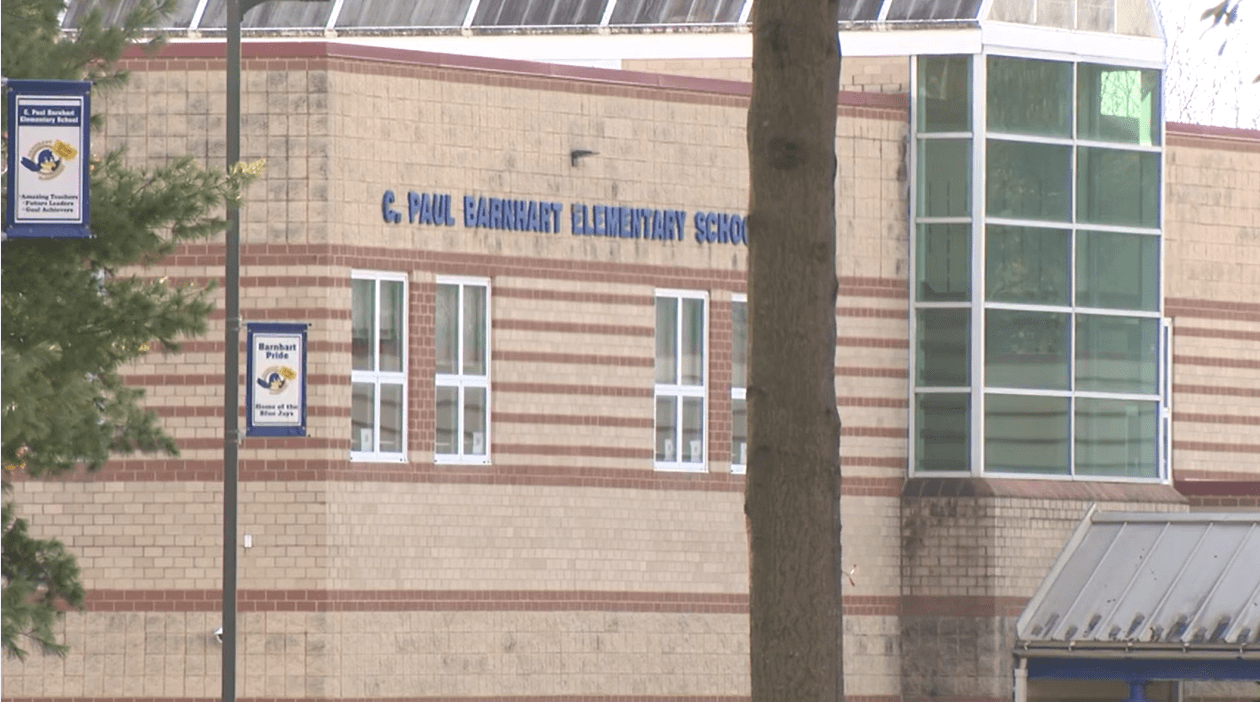RICHMOND, Va. (WRIC) – Colleges and universities across the country face yet another challenge as they approach the end of an unprecedented fall semester disrupted by the coronavirus pandemic: testing hundreds of thousands of students for the virus before Thanksgiving break.
While cases have climbed and restrictions have been reintroduced, many of Virginia’s colleges and universities will not require students to get a COVID-19 test before leaving campus and returning home. Instead, most are offering students free testing options on campus, but data provided by schools across Virginia indicate that thousands will not take advantage of voluntary testing ahead of the holiday.
Anxiety has grown over the idea of college students leaving campus and traveling through Virginia and the rest of the country in the next week, with the American College Health Association, an organization of college health professionals, encouraging that students should remain on campus and take part in virtual Thanksgiving events.
“One important strategy for these campuses to consider is to actively discourage students from traveling over the Thanksgiving break and encourage students to have a virtual Thanksgiving event with family members instead,” the ACHA said in an October report. “Institutions should plan to provide on-campus meals and encourage staying in place for ‘Friendsgiving.’”
Dr. Parham Jaberi, chief deputy commissioner at the Virginia Department of Health, said that VDH and the leadership from Virginia’s Institutes of Higher Education have held discussions leading up to the holiday break on safety measures to help prevent or mitigate COVID-19 spread in communities. He added that there have also been weekly calls between the department and the Medical Directors of Colleges and Universities on the matter.
“As a public health agency, we realize that any time individuals are away from home and interacting with others in the community outside of their immediate household, there may be a greater chance of spread of COVID-19,” Dr. Jaberi said. “It is therefore critical that those traveling adhere to the general precautionary measures we have encouraged through the pandemic, which include social distancing wherever possible, wearing a mask, washing hands and avoiding any travel if in fact symptomatic.”
In order to limit travel within communities and prevent the spread of the virus, many of Virginia’s universities will have their students finish the semester online and not return to campus after the holiday break. These decisions were made by the schools early in the semester in anticipation of expected infection spikes during the winter.
If a student in university housing tests positive ahead of break, schools will still offer isolation and quarantine spaces for them but not require that they stay on campus.
“Realizing that each institution may have different resources, different rates of illness in their communities, and other factors that are unique to them,” Jaberi continued, “we defer to each institution to make the best decisions for their students, faculty, and staff in helping prevent the potential spread of COVID-19 with the upcoming holiday travels.”
Virginia’s institutions of higher education have been hit hard by budget gaps brought on by the pandemic, having to increase spending for COVID-19 testing, moving to online learning and personal protective equipment on campus.
“Testing has been a critical part of the university’s operational strategy this fall,” William & Mary’s Chief Operating Officer Amy Sebring said Tuesday. “We recognized early on that we would need to reduce non-essential costs this fiscal year in order to shift resources to cover a myriad of COVID-related expenses.”
The economic fallout led Gov. Ralph Northam to allocate more than $116 million in CARES Act funding to these schools in late October, specifically for additional testing, PPE and remote learning infrastructure.
“William & Mary received almost $5 million from this allocation to cover some of the expenses we’ve incurred since July 1, including exit testing,” Sebring added.
Virginia Commonwealth University, with its 23,172 undergraduates and 4,440 students living on campus, used a portion of the more than $10 million in federal support it received to provide tests for the 1,800 students who signed up for exit testing.
Even with more federal funding, not all schools can afford mass testing events before Thanksgiving break. The University of Virginia is one of the only universities in the commonwealth that have a mandatory testing program before students head back to their hometowns. The University of Mary Washington in Fredericksburg got a little more than $1 million in the latest round of CARES Act funding and will spend $100,000 on testing. Roughly 950 Mary Washington students have signed up for voluntary testing scheduled for this week.
Despite concerns, some health officials have suggested that mass testing of asymptomatic individuals won’t necessarily find high rates of infection. Dr. Danny Avula, director of the Richmond and Henrico health departments, said that while testing can be helpful, he does not advocate for mass testing of asymptomatic college students.
“When we mass screen asymptomatic people, we just don’t reveal that much disease,” Avula said, further explaining later that symptoms are sensitive indicators of disease.
When asked how he thinks colleges should handle the upcoming holiday break in an ideal world, Dr. Jaberi, who also leads Virginia’s coronavirus testing task force, said that students and staff should limit interactions two weeks before leaving campus and suggested they not take part in large gatherings.
“It would be important that each individual is tested if they have any signs or symptoms of COVID-19 or if they have been in close contact with someone who has been recently diagnosed,” he said. “Once home, it would be prudent to limit interactions with others, thus avoiding large gatherings where possible.”
How Virginia schools are handling Thanksgiving break
Virginia Commonwealth University
- Total enrollment: 30,103
- Undergraduates: 23,172
- Students living on campus: 4,400
- Out-of-state students: 3,010 (10% of student population)
- Required or voluntary exit testing: Voluntary
- Number of students getting tested: 1,800 students signed up
- Total number of confirmed cases this semester: 454 (students and employees)
- When the campus closes: Nov. 25 at noon
- Returning after break: Final exams will be held remotely
- Spring semester plans: VCU will require all students living on campus to be tested before returning for the spring semester.
University of Virginia
- Total enrollment: Nearly 24,000
- Undergraduates: 16,000 on grounds
- Students living on campus: 4,500 in university housing/13,500 living off grounds
- Out-of-state students: N/A
- Required or voluntary exit testing: Required
- Number of students getting tested: UVA will test all students
- Total number of confirmed cases this semester: 1,218 (1,047 students)
- When the campus closes: Classes end Nov. 24
- Returning after break: Students have been asked to return home until the spring semester on February 1
- Spring semester plans: UVA will require all students living on campus to be tested before returning for the spring semester.
University of Virginia students will be required to take part in the school’s mandatory prevalence testing program before leaving campus next week. Each will get a notification of a time frame to visit a testing station on campus to provide a saliva sample.
There will also be a voluntary option for students who would like an additional test or one closer to Nov. 24, the last day before Thanksgiving break. Faculty and staff can take part in voluntary, asymptomatic testing before break as well.
University of Richmond
- Total enrollment: 4,002
- Undergraduates: 3,147
- Students living on campus: 2,300
- Out-of-state students: 566 undergrads
- Required or voluntary exit testing: Voluntary
- Number of students getting tested: N/A
- Total number of confirmed cases this semester: 76
- When the campus closes: On-campus residential areas close Nov. 22 at 5 p.m.
- Returning after break: Classes will resume remotely Nov. 30 and conclude on December 5. Roughly 150 students will remain on campus over winter break
- Spring semester plans: Students planning on staying on campus this spring will be required to be tested for COVID-19 when they get to campus.
George Mason University
- Total enrollment: N/A
- Undergraduates: N/A
- Students living on campus: Approximately 11,500 students in some type of face-to-face instruction/1,200 faculty teaching on campus
- Out-of-state students: N/A
- Required or voluntary exit testing: Voluntary
- Number of students getting tested: N/A
- Total number of confirmed cases this semester: 175 (138 students and 37 employees)
- When the campus closes: Thanksgiving recess closes university from Nov. 25 – 29
- Returning after break: GMU will convert to all-online instruction on Nov. 30 and semester will end Dec. 16
- Spring semester plans: Classes begin Jan. 19 and those who plan on visiting campus must still complete a daily health check before doing so.
The university has touted randomized testing of its asymptomatic community with the help of an algorithm built to select people to invite for testing from among those who said they will be on campus at some point in the fall semester. The testing center can accommodate 200 tests a day/1,000 per week, according to Carol Urban, Mason’s director of COVID testing and screening operations.
Students, faculty, staff and contractors planning to visit campus in any capacity must complete daily Health Checks with an online screening tool.
James Madison University
- Total enrollment: 21, 889
- Undergraduates: 19,943
- Students living on campus: 5,381 active housing contracts for the fall semester
- Out-of-state students: 1,311 living on campus
- Required or voluntary exit testing: Voluntary
- Number of students getting tested: 6,892 tests conducted since July
- Total number of confirmed cases this semester: 1,641
- When the campus closes: Nov. 21
- Returning after break: Almost all courses will transition online and students have the option to stay home through winter break.
- Spring semester plans: Students must sign JMU’s Stop the Spread Agreement, which mandates that students quarantine for 8 days before returning to campus, by Jan. 13, 2021.
JMU partners with the Virginia Department of Health and Health and Human Services to provide free mass testing on Wednesdays, which will continue through November 18. All are encouraged to take advantage and testing will resume after the Thanksgiving break through Dec. 16.
According to JMU spokeswoman Mary-Hope G. Vass, the random surveillance tests cost $100 each, plus an additional $12 for a fee associated with collection costs, for a total of $112 per test.
JMU University Health Center offers testing for students during the week and on weekends by appointment. The university started randomly selecting students for surveillance testing – approximately 300 students are tested each week – since students returned in October.
Old Dominion University
- Total enrollment: 24,176
- Undergraduates: 19,372
- Students living on campus: 3,147
- Out-of-state students: 255
- Required or voluntary exit testing: Voluntary
- Number of students getting tested: 492 students signed up for exit testing
- Total number of confirmed cases this semester: 187
- When the campus closes: Nov. 25
- Returning after break: All classes will be online through Dec. 11. Not all students are being dismissed as ones in traditional residence halls were given the option to end housing agreements for remainder of fall semester beginning at Thanksgiving break.
- Spring semester plans: Classes resume Jan. 19
Virginia Tech
- Total enrollment: 37,010
- Undergraduates: 30,016
- Students living on campus: 8,400
- Out-of-state students: 9,004 (30% of total enrollment)
- Required or voluntary exit testing: Voluntary
- Number of students getting tested: 3,600
- Total number of confirmed cases this semester: 1,671 (1,629 students and 42 employees)
- When the campus closes: Nov. 21
- Returning after break: Last week of class/final exams fully online.
- Spring semester plans: Classes begin Jan. 19 (classes to be held virtually)
Virginia Tech expects most students will stay home until the start of the spring semester. The university has been conducting random testing for several weeks now, testing approximately 1,300 students per week.
Free testing for the 3,600 students will begin Nov. 14 through Nov. 24 at Lane Stadium. Students will get fined $100 if they don’t show or cancel within 48 hours of a scheduled appointment.
College of William and Mary
- Total enrollment: N/A
- Undergraduates: 1,525
- Students living on campus: 6,000 (students living on campus/students living off-campus within 30 miles)
- Out-of-state students: 503 undergrads
- Required or voluntary exit testing: Voluntary
- Number of students getting tested: 3,600 (400 faculty/staff)
- Total number of confirmed cases this semester: 64
- When the campus closes: Nov. 25
- Returning after break: Final exams end before campus closes
- Spring semester plans: Graduate students move in Jan. 15.
Like many schools, William and Mary required students to be tested and quarantine before coming to campus for the fall semester. William and Mary will have the requirements for the spring semester in January.
Norfolk State University
- Total enrollment: Over 5,000
- Undergraduates: N/A
- Students living on campus: 1,900
- Out-of-state students: N/A
- Required or voluntary exit testing: Voluntary
- Number of students getting tested: 3509 total tests conducted this semester
- Total number of confirmed cases this semester: 34
- When the campus closes: Final exams end Nov. 25
- Returning after break: Students will return for the spring semester for classes on Jan. 27
- Spring semester plans: NSU will not require its students to be tested before coming back to campus for the spring semester.
Christopher Newport University
- Total enrollment: 4,919 (2019)
- Undergraduates: 4,837 (2019)
- Students living on campus: About 4,500 students either living on campus or close by and attending classes
- Out-of-state students: 328 (2019)
- Required or voluntary exit testing: N/A
- Number of students getting tested: N/A
- Total number of confirmed cases this semester: 126
- When the campus closes: Nov. 23
- Returning after break: Classes will resume via online instruction
- Spring semester plans: Classes begin Jan. 11.
“The university doesn’t offer testing on campus but Riverside Health System, one of the region’s largest medical providers, is across the street and there are many other close-by testing options. Because we don’t have an on-campus medical center that can quickly turn around test results, the guidance we received was that widespread, mandatory testing would not be helpful,” Jim Hanchett, the university’s chief communications officer told 8News in a statement. “We were advised we were better off requiring daily symptom screening, taking strong measures to limit the spread of the virus on campus and aggressively isolating and quarantining students who reported symptoms or had significant exposure. The relatively limited number of cases we’ve experienced has validated that strategy. Nearly 70% of our classes are in-person, one of the highest percentages in the state, and our attendance and enrollment numbers look good.”
Radford University
- Total enrollment: 10,695
- Undergraduates: 7,307
- Students living on campus: 3,000
- Out-of-state students: 1,259
- Required or voluntary exit testing: Voluntary
- Number of students getting tested: 700 (525 students) signed up for exit testing; 5,374 total campus-based tests conducted
- Total number of confirmed cases this semester: 548
- When the campus closes: Final exams end Nov. 20
- Returning after break: No
- Spring semester plans: Residence halls open Jan. 13
According to Caitlyn Scaggs, Radford’s associate vice president for university relations, the university will not require exit testing but will offer it free of charge to those who request one.
Longwood University
- Total enrollment: 5,864
- Undergraduates: 5,124
- Students living on campus: 3,500 undergrads on campus
- Out-of-state students: 175 (5% of students living on campus)
- Required or voluntary exit testing: Voluntary
- Number of students getting tested: N/A
- Total number of confirmed cases this semester: 118 (students, faculty and staff)
- When the campus closes: Nov. 25
- Returning after break: Final exams will be online
- Spring semester plans: Graduate courses begin Jan. 8 and undergrads begin class on Jan. 13
Randolph-Macon College
- Total enrollment: N/A
- Undergraduates: 1,543
- Students living on campus: 1,000
- Out-of-state students: N/A
- Required or voluntary exit testing: Voluntary
- Number of students getting tested: N/A
- Total number of confirmed cases this semester: 41
- When the campus closes: Nov. 20
- Returning after break: Yes
- Spring semester plans: First day of classes is Feb. 9; students are required to self-quarantine for 10 days before arriving on campus and those from international destinations must quarantine for 14 days.
“We are making PCR tests available to every student, faculty and staff member on November 17th. This is being done in conjunction with the Virginia National Guard and the Virginia Department of Health at no charge to our community,” said Anne Marie Lauranzon, the director of Randolph-Macon’s marketing and communications department. “Anyone who happens to test positive will be isolated and not required to return home until such time as they test negative and the isolation period has ended.”
University of Mary Washington
- Total enrollment: Over 5,000
- Undergraduates: 4,400
- Students living on campus: 1,688
- Out-of-state students: 204
- Required or voluntary exit testing: Voluntary
- Number of students getting tested: 950
- Total number of confirmed cases this semester: 32
- When the campus closes: Nov. 21 at 10 a.m.
- Returning after break: Classes will resume online and final exams will be held from Dec. 7-11.
- Spring semester plans: Classes start Jan. 25 and students will be required to take part in a 14-day self-quarantine before returning to campus
The university will support residential students who test positive in exit testing and elect to remain on campus for isolation during break, Lisa Chinn Marvashti, Mary Washington’s interim director of media and public relations, told 8News.
Individual school data provided by the colleges and universities


























































